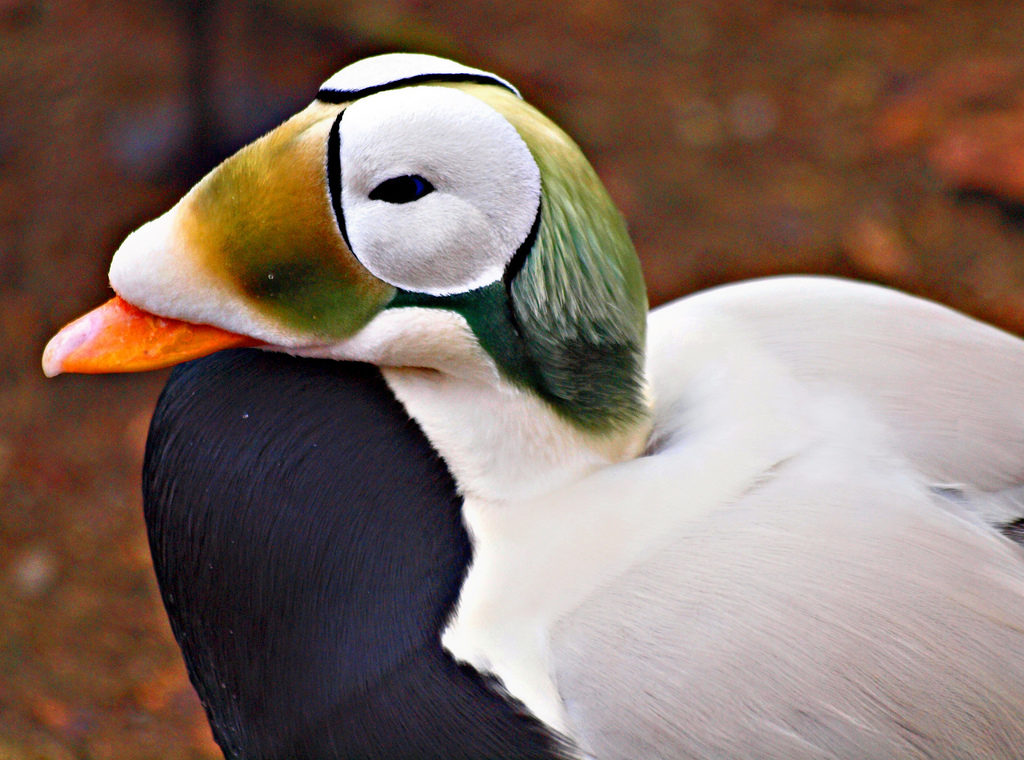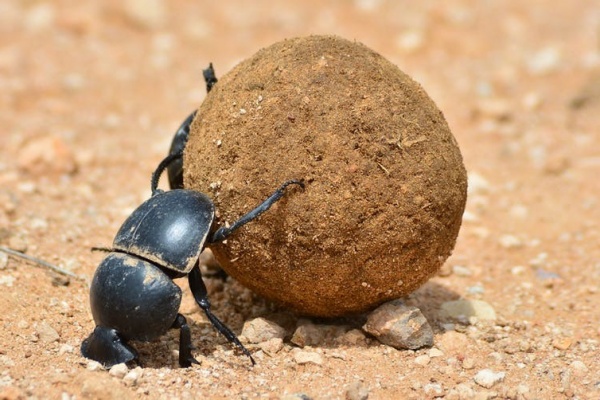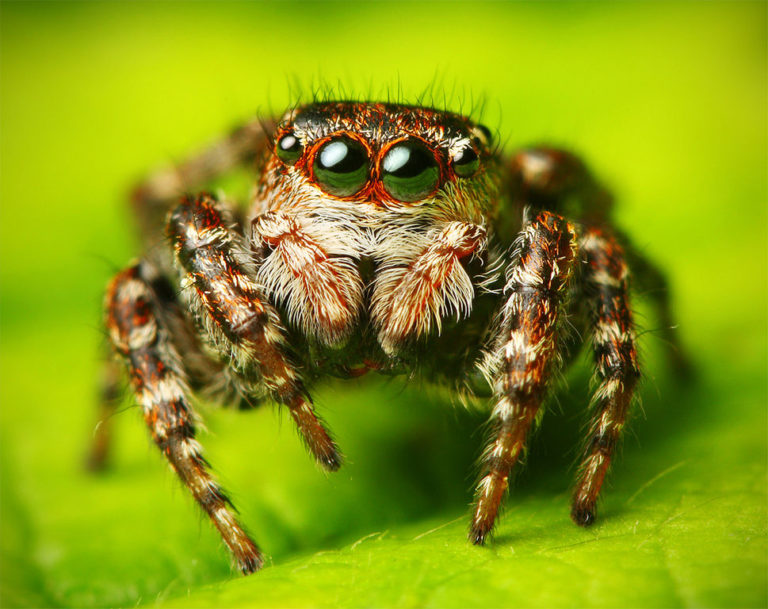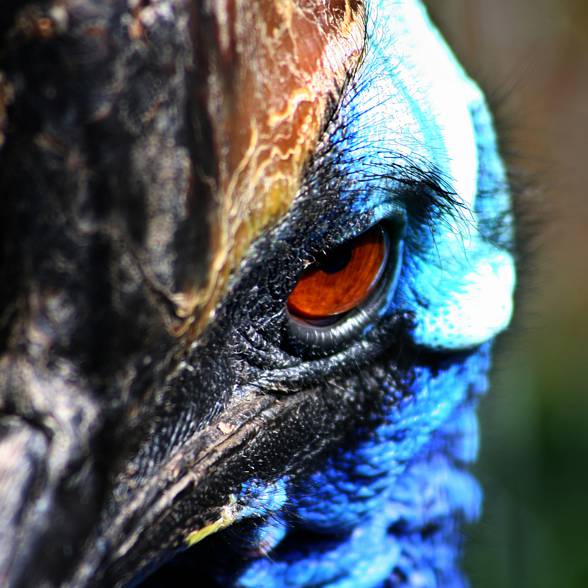The World’s Most Beautiful and Unusual Ducks
Ducks are among the most familiar and beloved animals on Earth. Found on every continent except Antarctica, these waterfowl dazzle us with their colors, charm, and incredible diversity. While there are around 120 species of ducks across the globe, a few stand out for their striking appearance and fascinating habits. Some prefer salty coastal waters, while others thrive in freshwater lakes and marshes — but all are a testament to nature’s artistry.
Here’s a look at some of the most beautiful and unusual ducks from around the world.

White-Headed Duck (Ruddy Duck of Europe)
The white-headed duck is one of the rarest waterfowl on the planet. Both males and females are compact, around 45 cm long, but males are instantly recognizable by their snowy white heads, bright blue bills, and stiff, pointed tails. Females, in contrast, are more subdued — brownish-gray with darker bills.
These ducks favor deep wetlands and open waters, but their habitats are vanishing due to wetland loss and hunting. Today, white-headed ducks teeter on the edge of extinction. Protecting wetlands and curbing illegal hunting are crucial steps in saving this remarkable species.
Spectacled Eider
The spectacled eider is a striking sea duck native to the Arctic coasts of Alaska and northeastern Siberia. Males sport white backs, black bodies, and bright yellow-green heads with distinctive white circles around the eyes — giving them their “spectacled” look. Females, meanwhile, are warm brown with lighter patches near the eyes.
These ducks feed mostly on shellfish, mollusks, and aquatic insects. Sadly, their numbers have plummeted by more than 90% since the 1970s, largely due to climate change and threats from oil and gas development in the Arctic Ocean.

Ruddy Duck (American Stiff-Tailed Duck)
Known for their glossy plumage and perky tails, ruddy ducks are small but full of character. In summer, males flash chestnut bodies and vivid blue bills, which fade to gray in winter. Their courtship displays are both comical and charming — males beat their chests and create bubbles in the water to impress females.
They breed in freshwater lakes and ponds across North America, feeding on aquatic plants, insects, and crustaceans. Despite their small size, they’re feisty and fearless, often seen diving or flicking their tails upright.
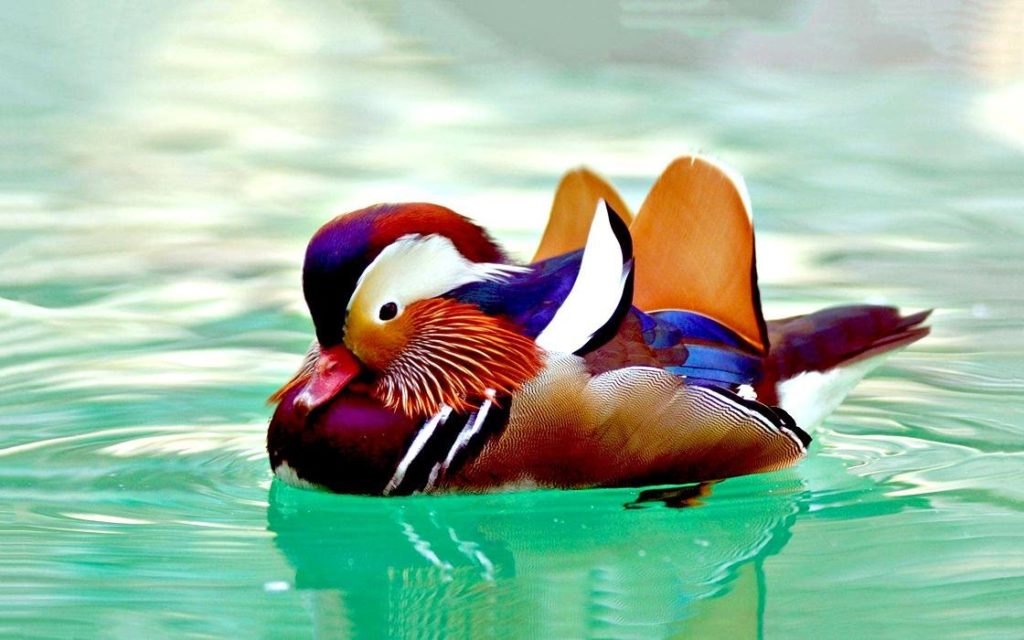
Mandarin Duck
Few birds on Earth rival the mandarin duck in sheer beauty. Native to East Asia but now found as far as England, Ireland, and California, this duck is a living work of art. Males wear an explosion of color — orange “sails” on the back, a purple chest, and shimmering green and blue feathers — while females are elegantly patterned in soft brown and white.
In Asian culture, mandarin ducks symbolize love and fidelity. Legend says they mate for life, which is why pairs are often given as wedding gifts to represent enduring affection.

Surf Scoter
Often nicknamed the “skunk-headed coot,” the surf scoter is a bold and unusual sea duck found along North America’s Pacific and Atlantic coasts. Males are mostly black with white patches on the forehead and neck, plus a vividly colored bill of orange, yellow, and black. Females are browner, with pale cheeks and a greenish bill.
Surf scoters feed on shellfish, sea worms, small fish, and other marine creatures. They’re strong divers and are often spotted riding the waves near rocky shores or harbors during winter.
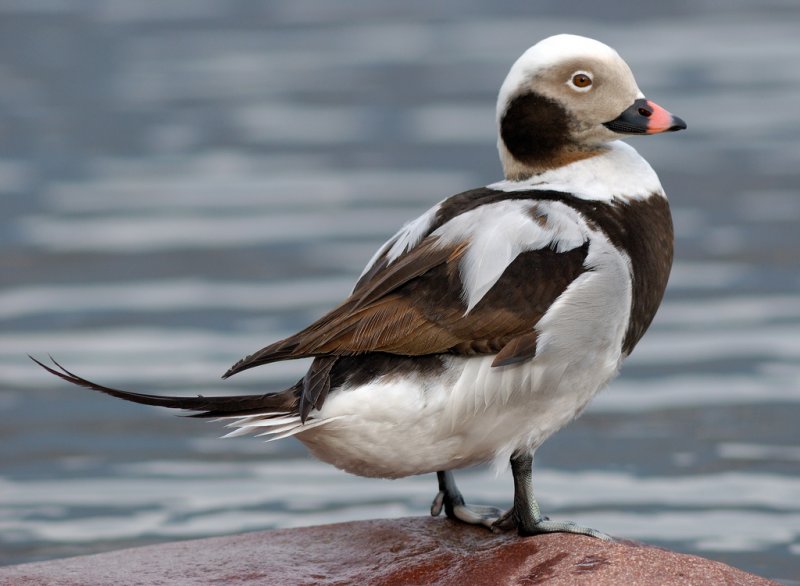
Long-Tailed Duck
Graceful and hardy, the long-tailed duck is an Arctic species known for its elegant plumage and — as the name suggests — its two long, slender tail feathers. Males change color with the seasons, turning dark in summer and mostly white in winter.
These ducks are exceptional divers, capable of plunging up to 60 meters below the ocean’s surface in search of food. They feed mainly on crustaceans, mollusks, and aquatic insects, spending their winters at sea and summers nesting in the tundra’s freshwater pools.
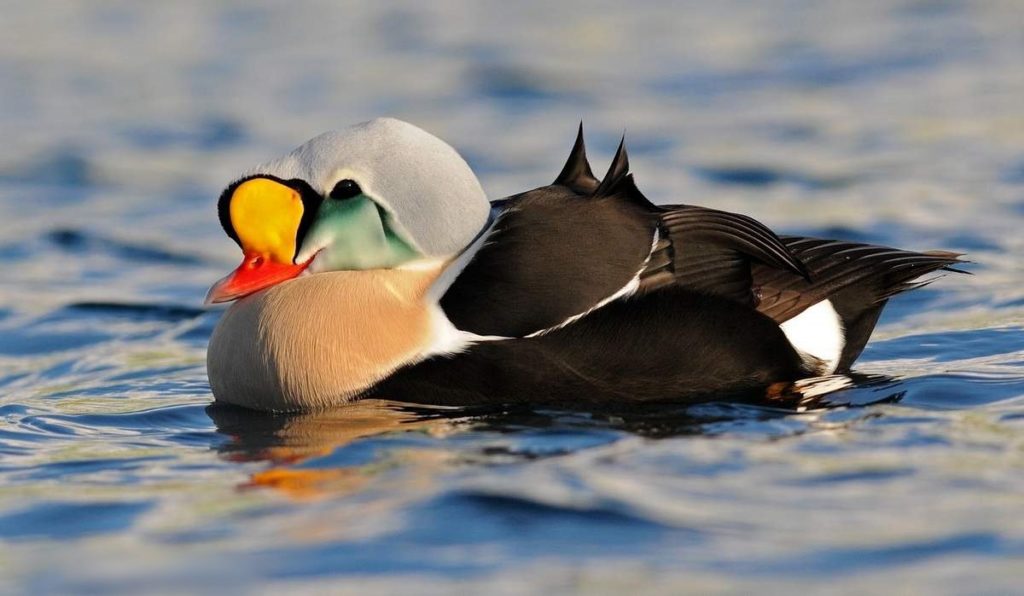
King Eider
One of the largest sea ducks in the Northern Hemisphere, the king eider truly lives up to its name. Males are regal in appearance, with creamy white chests, black bodies, bluish-gray heads, and an unmistakable orange-red bill topped with a golden “crown.” Females, on the other hand, are camouflaged in rich brown tones.
During the breeding season, these ducks migrate to Arctic tundra wetlands to nest and feed on fish, squid, and sea urchins. Their striking plumage and resilience in icy environments make them one of the Arctic’s most iconic birds.

Hooded Merganser
The hooded merganser is easily recognized by its dramatic crest — a fan-shaped “hood” that can expand or flatten depending on the bird’s mood. Males have sharp black-and-white markings with bright yellow eyes, while females sport a cinnamon-brown crest and soft gray plumage.
These small diving ducks are native to North America, where they inhabit wooded lakes and rivers. Agile underwater hunters, they feed on fish, crayfish, and aquatic insects, diving with lightning speed to catch their prey.
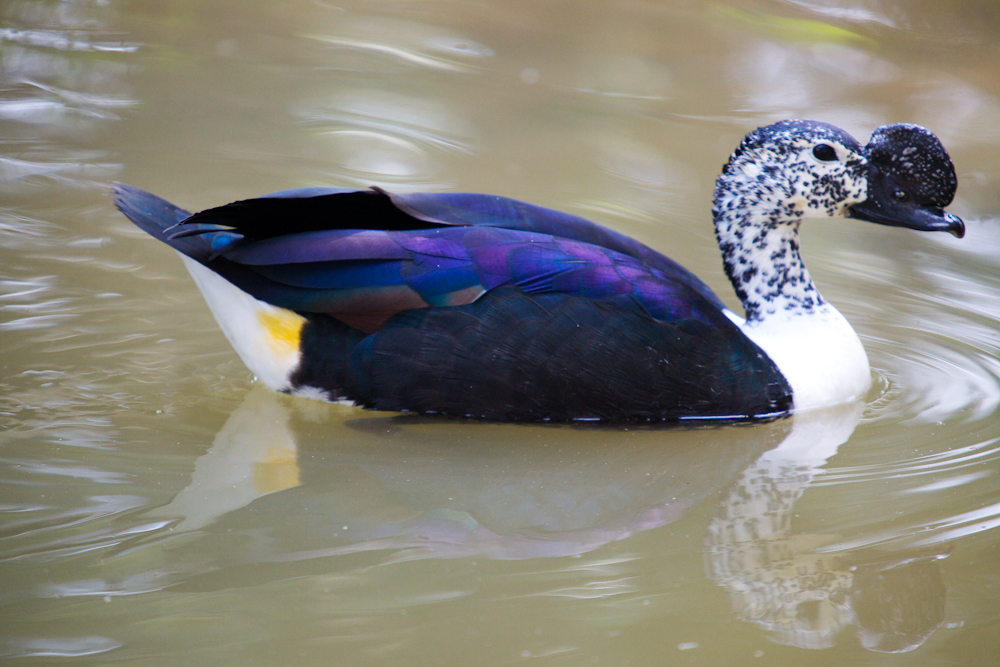
Comb Duck
Found across tropical Africa, Madagascar, and parts of South Asia, the comb duck is one of the largest and most distinctive ducks in the world. Males are instantly recognizable by the large black “comb” or knob on their bills. Their glossy plumage shines with blue, green, and purple iridescence, contrasting with their white necks and speckled heads.
These ducks prefer freshwater wetlands, rivers, and rice paddies, where they forage for water lilies, seeds, grasses, small fish, and frogs. During the rainy season, they gather in large flocks to breed in shallow wetlands.
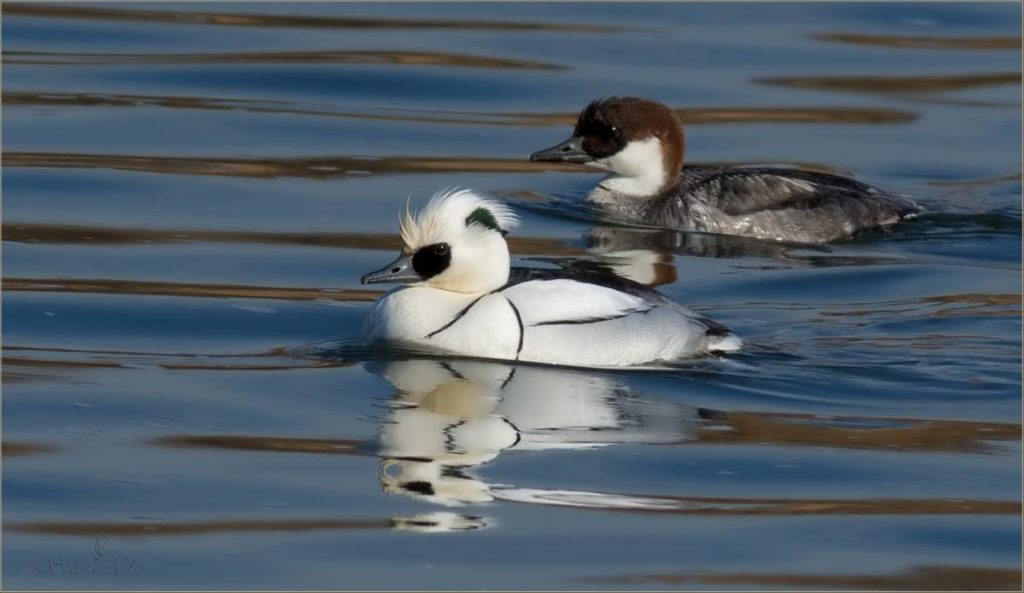
Smew
The smew is a small, elegant merganser found across northern Europe, Asia, and parts of North America. Often called the “panda duck,” the male is dazzling in crisp white plumage with bold black markings on the head, back, and chest. Females, known as “redheads,” are equally striking with chestnut crowns and gray bodies.
Smews are expert divers, feeding mainly on small fish in cold freshwater lakes and rivers. Their sleek shape and black-and-white contrast make them one of the most photogenic ducks in the world.
Nature’s Living Watercolors
From the icy waters of the Arctic to the tropical wetlands of Africa, ducks come in a stunning variety of colors, shapes, and sizes. Each species tells its own story — of adaptation, survival, and beauty. Whether it’s the loyal mandarin duck or the fearless surf scoter, these birds remind us that even in familiar creatures, nature hides masterpieces waiting to be admired.


